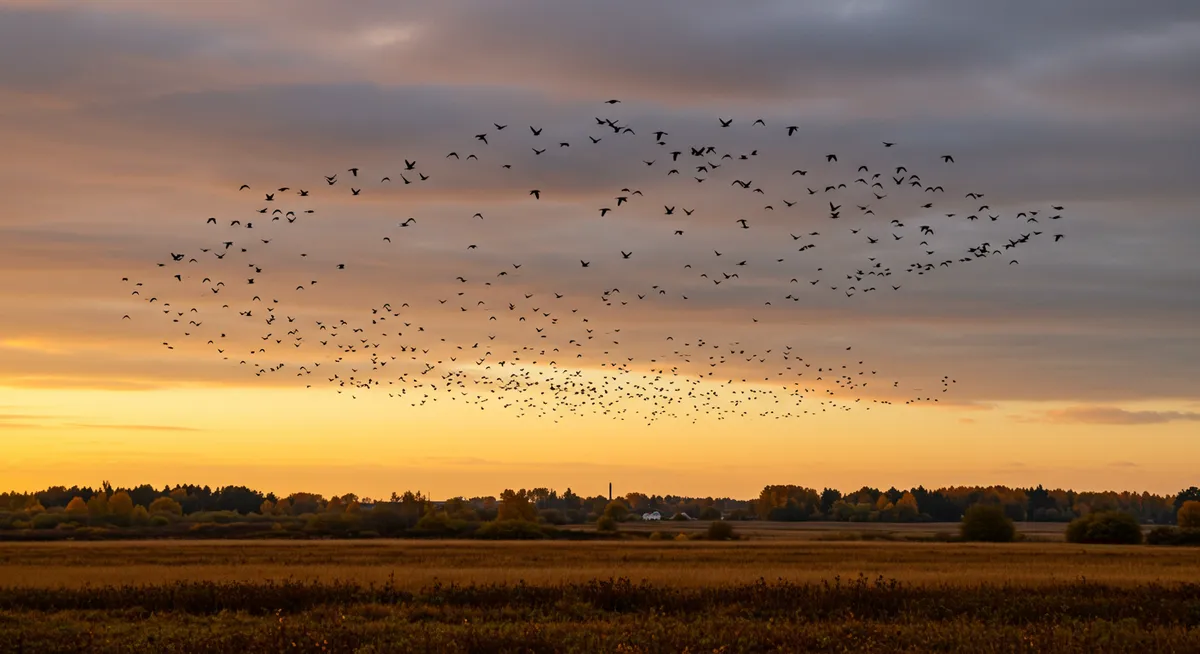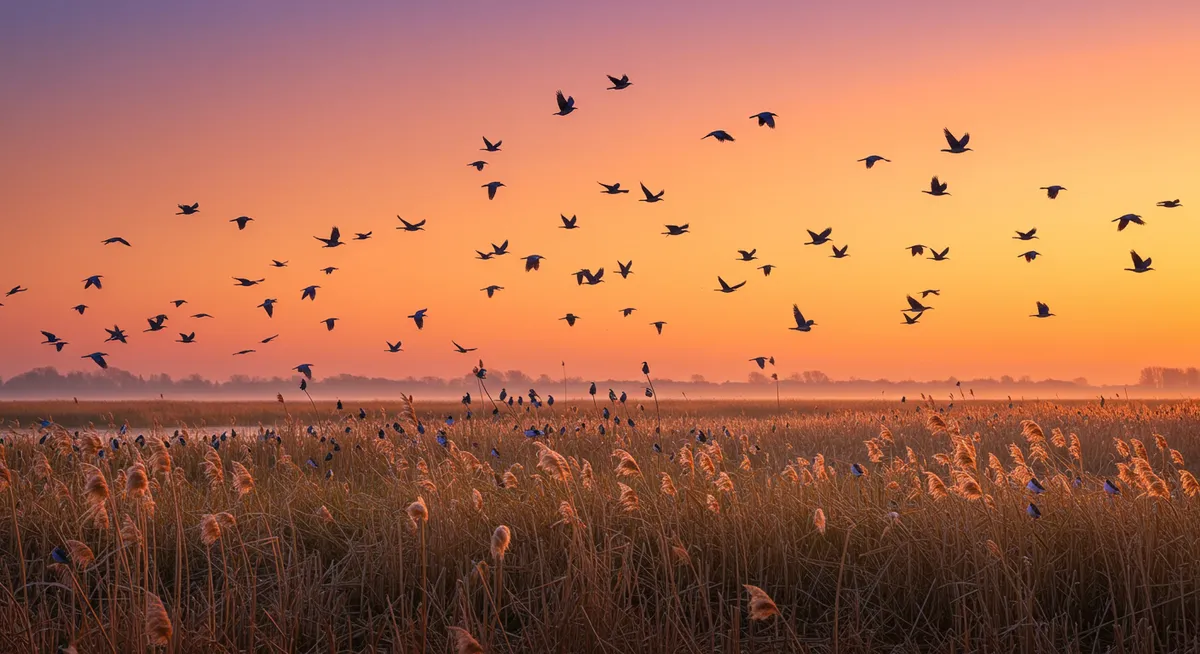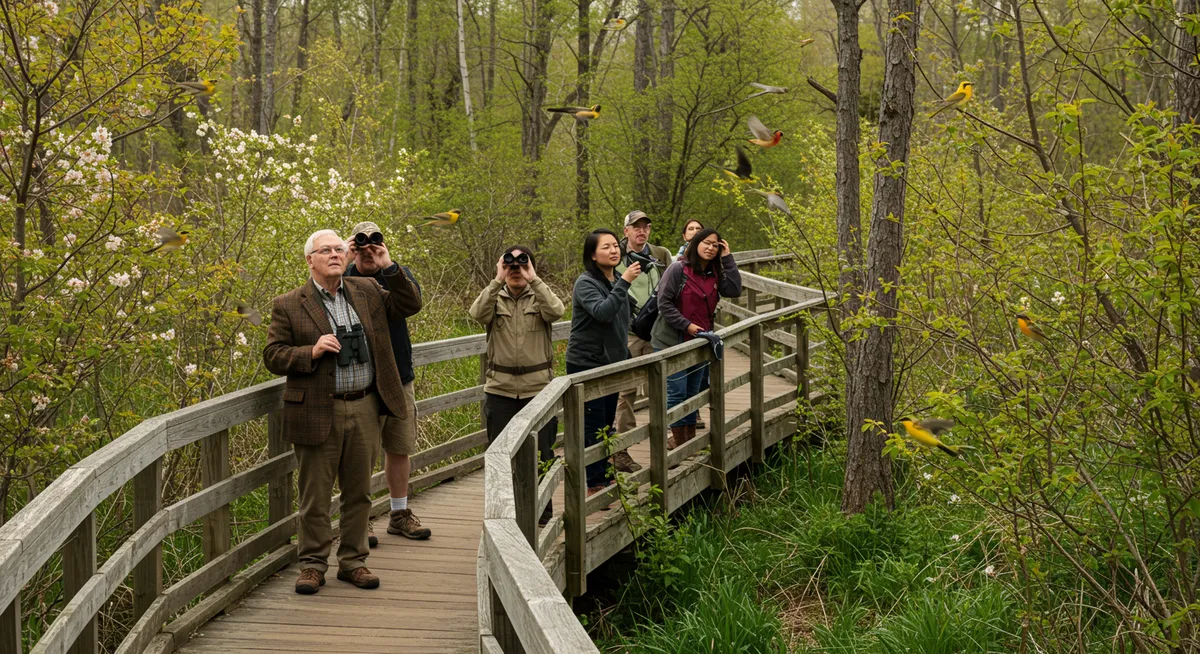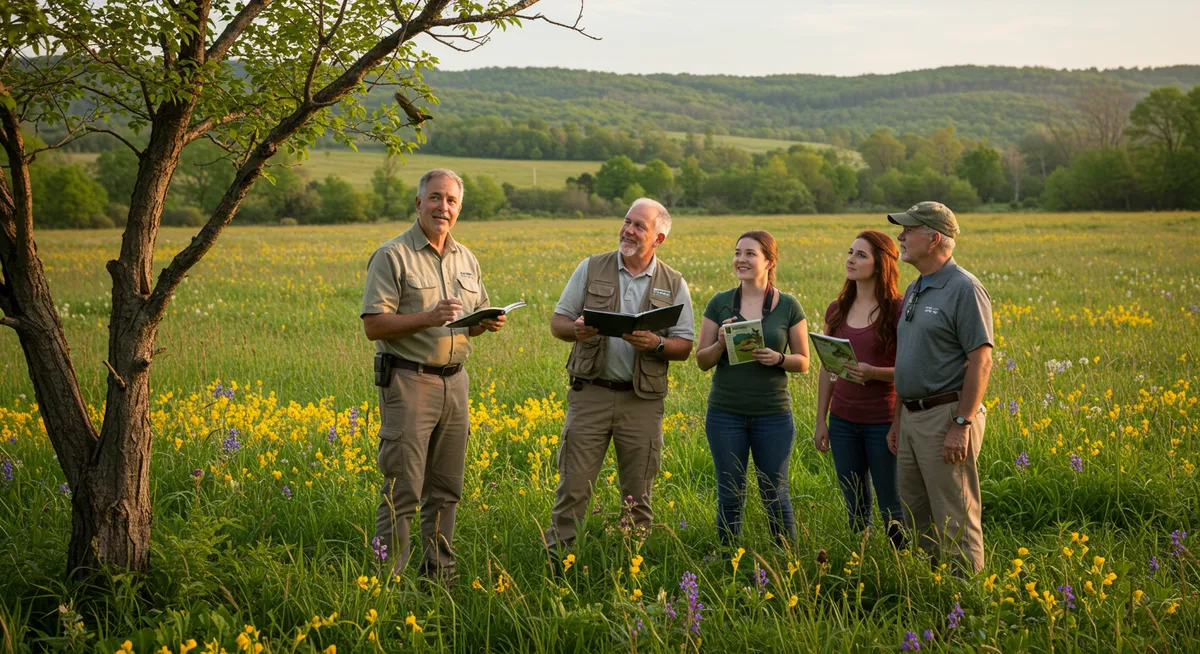Spring Bird Migration Walks: Nature's Greatest Show on Wing

Spring Bird Migration Walks: Nature's Greatest Show on Wing
Each spring, one of nature's most spectacular phenomena unfolds across the globe as billions of birds make epic journeys from wintering grounds to breeding territories. These mass movements create extraordinary opportunities for nature enthusiasts to witness remarkable concentrations of birds, dramatic courtship displays, and rare species that may be visible only during this narrow seasonal window. This guide explores the world's most exceptional walking trails and nature paths specifically designed to showcase the miracle of spring bird migration.

Why Spring Bird Migration Creates Unparalleled Nature Experiences
While birds migrate in both spring and fall, several factors make spring migration particularly special for nature walkers:
- Vibrant Breeding Plumage: Many birds display their most colorful and distinctive feathers during spring migration
- Concentrated Activity: Time pressure to reach breeding grounds creates more predictable movements and congregations
- Vocal Activity: Birds sing more during spring migration, making them easier to locate and identify
- Courtship Behaviors: Many species perform spectacular displays only visible during this season
- Combined Natural Spectacles: Bird migration often coincides with spring wildflowers and other seasonal phenomena
For these reasons, spring migration walks offer unique combinations of biodiversity, behavior observation, and natural spectacle that create truly memorable nature experiences. While different in character from other spring phenomena like desert wildflower blooms or European bluebell woods, bird migration represents an equally dramatic seasonal transformation worth seeking out.
North American Spring Migration Hotspot Trails
Point Pelee National Park, Ontario, Canada
Perhaps North America's most famous spring migration site, Point Pelee's strategic location on Lake Erie creates a funnel effect for birds crossing the Great Lakes. This concentrated migration has led to the development of exceptional walking trails specifically designed to maximize bird viewing opportunities.
The 4-kilometer Woodland Nature Trail passes through diverse habitats that attract different migrant species, particularly warblers, vireos, and thrushes. What makes this trail remarkable is how it's designed with multiple viewing "pockets"—small clearings with seating where birds can be observed at eye level as they move through the canopy.
The shorter 1-kilometer Shuster Trail focuses on edge habitats that attract exceptionally diverse spring migrants, including scarlet tanagers, Baltimore orioles, and rose-breasted grosbeaks. The trail includes covered observation platforms specifically positioned to catch birds as they make their first landfall after crossing Lake Erie.
Peak migration typically occurs from early to mid-May, when over 300 species may pass through the park, with many days recording 100+ species. The park's Festival of Birds offers guided migration walks with expert naturalists during this peak period.
For the most immersive experience, the park's 1.2-kilometer Woodland Nature Trail passes through multiple forest habitats where migrants concentrate. The trail features strategically placed viewing blinds and platforms that maximize bird observation without disturbance. During mid-May peak, it's not uncommon to encounter 20+ warbler species along this single trail within a morning.
Visitors interested in a combination experience may want to include Point Pelee in a broader Great Lakes spring itinerary that includes the ancient woodland wildflower walks found throughout Michigan and southern Ontario, where many of the same forest birds can be observed alongside spectacular spring ephemerals.
High Island Sanctuary Trails, Texas Gulf Coast
When spring winds and weather conditions create "fallouts" along the Texas coast, the oak mottes (small woodlands) at High Island become one of the world's most spectacular bird migration experiences. These small forests represent the first available stopover habitat for thousands of birds after their non-stop flight across the Gulf of Mexico.
The Boy Scout Woods Sanctuary offers a network of trails through prime migrant habitat, with the 0.8-kilometer Main Loop providing access to multiple viewing platforms positioned where birds concentrate after Gulf crossings. The adjacent Smith Oaks Sanctuary features the 1.2-kilometer Old Mexico Road Trail, which connects to a series of woodland ponds where migrants gather to refuel.
What makes these trails especially remarkable is the combination of exhausted migrants and the unique viewing infrastructure—raised platforms that place observers at canopy level where colorful warblers, tanagers, orioles, and buntings feed frenetically to replenish energy reserves after their Gulf crossing.
The peak migration window typically falls between mid-April and early May, with the most spectacular fallouts occurring after strong southerly winds shift to northerly, forcing tired migrants to make immediate landfall.
Magee Marsh Wildlife Area, Ohio, USA
Known to birders as the "Warbler Capital of the World," this Lake Erie shoreline preserve features one of North America's most bird-friendly walking trails. The 1.2-kilometer boardwalk trail was specifically designed to provide optimal views of spring migrants, particularly the colorful wood warblers that give the site its fame.
What distinguishes this trail is its unique design—elevated just enough to place observers at perfect eye level with the birds in the surrounding trees. The boardwalk includes multiple wider viewing areas with benches at strategic hotspots where migrants consistently concentrate.
The habitat configuration is perfectly suited for spring migration viewing, with a narrow band of woods between Lake Erie and inland marshes creating a concentrated migrant corridor. The walking experience here is remarkable for the sheer proximity to birds—colorful warblers often feed within arm's length of observers as they replenish energy reserves before continuing northward.
Peak migration typically occurs during the second and third weeks of May, coinciding with the famous "Biggest Week in American Birding" festival that offers guided walks and identification workshops for visitors of all experience levels.

European Spring Migration Corridors
Strait of Gibraltar Bird Observation Trails, Spain
The narrow strait between Spain and Morocco creates one of Europe's most concentrated bird migration corridors, with millions of birds funneling through this narrow passage on their journey from Africa to European breeding grounds. Several excellent walking trails have been developed specifically for witnessing this spectacle.
The 3-kilometer La Janda Wetland Circuit passes through restored marshlands that provide critical refueling habitat for migrants after their Mediterranean crossing. What makes this trail exceptional is the diversity of habitats it traverses—open water, reed beds, and shrubland—each attracting different migrant species from colorful European bee-eaters and rollers to various herons, storks, and raptors.
For a more dramatic experience, the 5-kilometer Tarifa Raptor Viewpoint Trail connects a series of observation points strategically positioned to witness one of Europe's most spectacular spring phenomena—the northward migration of thousands of large soaring birds including eagles, vultures, and storks. These birds rely on thermals that form over land, making the narrow strait a critical crossing point as they avoid the open sea.
The peak spring migration period runs from late March through April, with different species groups moving through in waves—early waterfowl and small songbirds, followed by mid-season herons and storks, and later peaks of raptors and aerial insectivores like swifts.
Neusiedler See-Seewinkel National Park, Austria
This UNESCO World Heritage site at the Austria-Hungary border represents one of Central Europe's premier spring migration hotspots, with extensive trail networks specifically designed for bird observation. The shallow lake and surrounding wetlands provide critical stopover habitat for birds moving between African wintering grounds and Eastern European breeding territories.
The 4-kilometer Lange Lacke Trail features a series of bird observation towers and blinds positioned along a chain of seasonal soda lakes that attract exceptional concentrations of wading birds, waterfowl, and songbird migrants. What makes this trail particularly special is the extraordinary proximity to normally shy species—specialized photography blinds along the route allow close observation of feeding spoonbills, glossy ibis, and various herons.
The 6.5-kilometer Illmitz Wetland Circuit combines several habitats including reed beds, wet meadows, and steppe grasslands, each attracting different migrant species. The trail's careful design includes elevated sections that provide sweeping views across wetlands where thousands of birds may gather during peak migration periods.
The prime spring migration window extends from late March through early May, with mid-April typically offering the greatest diversity as short and long-distance migrants overlap in the region.
Falsterbo Peninsula Trails, Sweden
While better known for its spectacular fall migration, the Falsterbo Peninsula also offers exceptional spring bird walks as migrants return from southwestern Europe and Africa to Scandinavian breeding grounds. The peninsula's geographic position creates a natural migration funnel with excellent viewing opportunities.
The 3-kilometer Nabben Point Trail follows the peninsula's southern coastline, where strategic observation platforms provide views of birds making landfall after crossing the Baltic. What distinguishes this spring experience is the opportunity to witness the return of Arctic-breeding species in full breeding plumage, including colorful ruffs, spotted redshanks, and various breeding-plumaged ducks.
The nearby 5-kilometer Flommen Marsh Circuit traverses diverse wetland habitats that serve as critical refueling sites for migrants. Specialized viewing towers along the route provide elevated perspectives of arriving flocks, while boardwalk sections bring visitors into the heart of reed bed habitats used by more secretive migrant species like rails, bitterns, and various warblers.
The spring migration here reaches its peak slightly later than southern European sites, with the most spectacular movements typically occurring from mid-April through May, especially when southerly winds assist birds on their northward journey.
Asian Flyway Experience Walks
Mai Po Nature Reserve Boardwalks, Hong Kong
Positioned along the East Asian-Australasian Flyway—the world's most threatened bird migration route—Mai Po's extensive boardwalk system offers some of Asia's most remarkable spring bird walks. The reserve's strategic location in the Pearl River Delta provides critical stopover habitat for migrants traveling between wintering grounds in Southeast Asia and breeding territories in northeastern China, Mongolia, and Siberia.
The 3-kilometer Coastal Boardwalk passes through mangroves and intertidal mudflats, connecting a series of specially designed bird blinds positioned for optimal viewing of spring shorebird migration. What makes this experience extraordinary is the sheer numbers—tens of thousands of shorebirds may be visible simultaneously during peak spring migration, including endangered species like Spoon-billed Sandpipers and Nordmann's Greenshanks.
The 2-kilometer Gei Wai Freshwater Trail traverses managed wetlands where freshwater species concentrate during migration. Elevated viewing platforms provide excellent perspectives on arriving flocks of herons, egrets, and ducks, while also offering chances to spot more secretive migrants like crakes and bitterns moving through the reed beds.
The peak spring migration period runs from late March through April, with different species groups moving through in waves as they head to breeding grounds across northeastern Asia.
Olango Island Wildlife Sanctuary, Philippines
This small island in the central Philippines provides critical stopover habitat for shorebirds migrating along the East Asian-Australasian Flyway. A 1.5-kilometer boardwalk trail traverses the sanctuary's intertidal flats and mangroves, providing exceptional close views of migrants.
What makes Olango particularly special is the opportunity to witness shorebirds that have traveled from as far as Siberia and Alaska as they prepare for the next leg of their northward journey. The boardwalk includes covered observation shelters positioned at precise locations where tidal movements concentrate feeding birds, allowing for remarkable proximity to normally wary species.
The spring migration here typically peaks in March and early April, when thousands of shorebirds gather to refuel before continuing to breeding grounds across northern Asia. The sanctuary is renowned for its educational program, with local guides providing context about the extraordinary journeys of the birds observed along the boardwalk.
Oceania and the Southern Hemisphere
Miranda Shorebird Centre Trails, New Zealand
While Northern Hemisphere locations dominate discussions of spring migration, the Southern Hemisphere experiences its own spring bird movements. New Zealand's Miranda Shorebird Centre on the Firth of Thames features several trails specifically designed for observing birds returning from northern wintering grounds to New Zealand breeding territories.
The 2-kilometer Shell Bank Trail leads to specialized hides overlooking extensive mudflats where returning migrants concentrate. What makes this southern spring experience special is the opportunity to witness unique endemic species like the Wrybill returning from their internal New Zealand migration alongside international migrants returning from as far as Alaska.
The peak spring migration in the Southern Hemisphere occurs from September through November, creating opportunities for Northern Hemisphere travelers to experience spring bird migration twice in a single year.
Timing Your Spring Migration Walk
Understanding Migration Timing
Spring bird migration follows predictable patterns influenced by several factors:
- Latitude: Migration timing progresses from south to north as spring advances
- Species Groups: Different types of birds migrate at different times (waterfowl earliest, insect-eaters later)
- Weather Patterns: Bird movements correlate strongly with favorable winds and pressure systems
For optimal experiences, research historical peak dates for your chosen location, then monitor weather forecasts immediately before your visit. Ideal conditions typically include clear nights followed by mornings with light winds from a favorable direction (typically south in Northern Hemisphere spring).
Regional Timing Guidelines
Spring migration follows a general north-moving wave, but timing varies significantly by region. These general guidelines help plan migration walks in major regions:
- Southern United States: March through mid-April
- Mid-latitude United States and southern Europe: Mid-April through mid-May
- Northern United States, Canada, northern Europe: Mid-May through early June
- East Asia: Late March through April (south) to May (north)
- Southern Hemisphere: September through November (reversed seasons)
Within each region, elevation creates further timing variations, with lowland areas seeing migration peaks earlier than higher elevations. This principle of altitudinal migration timing parallels the blooming patterns observed in alpine wildflower meadows and Himalayan flower valleys, where spring's progression can be tracked upslope as the season advances.
Many migration hotspots now operate real-time migration alert systems that notify subscribers of exceptional movements, and citizen science platforms like eBird provide up-to-date information on what species are being observed at specific locations.
Essential Equipment for Migration Walks
Spring migration walks require some specialized equipment beyond standard hiking gear. Quality binoculars represent the most important investment—look for models with 8x magnification which provide the best combination of detail and field-of-view for active migrants. A spotting scope on a lightweight tripod adds tremendous value at wetland sites where birds may remain at greater distances.
Consider bringing a phone adapter for your optics, allowing you to capture photos and videos through your binoculars or scope—a technique called "digiscoping" that can produce remarkable results even with basic equipment. Mobile phone apps that provide bird identification, songs, and range maps are invaluable for migration walks, particularly those that function offline in areas with limited connectivity.
Dress in subdued earth tones to minimize disturbance to birds, and consider lightweight waterproof footwear as spring migration hotspots often involve wet or muddy terrain. A small folding seat can significantly enhance comfort during longer observation periods at particularly active locations.
Enhancing Your Spring Migration Experience
Understanding Migrant Behavior
Knowledge of basic bird behavior greatly enhances spring migration walks. After overnight flights, migrants typically exhibit predictable patterns—initial frenetic feeding to replenish energy reserves, followed by preening and resting. Learning to look for concentrated feeding activity in sheltered, insect-rich areas can lead to discovering "migrant traps" where birds congregate.
Different species utilize different habitat layers during migration stops—warblers typically feed in upper and mid-canopy levels, thrushes and sparrows on the ground and lower shrubs, and flycatchers at woodland edges. By systematically scanning each layer, you'll maximize the species observed during your walk.
Guided Walks and Citizen Science
Most major migration hotspots offer guided walks led by experienced naturalists during peak spring periods. These provide invaluable insights into identification, behavior, and optimal viewing strategies specific to the location. Many sites also organize migratory bird festivals during peak periods, combining guided walks with workshops, presentations, and other educational activities.
Consider participating in citizen science projects during your migration walks. Programs like eBird allow your observations to contribute to our scientific understanding of migration timing, routes, and population trends, adding another dimension of purpose to your experience.

Conservation Concerns and Ethical Viewing
Spring migrants face numerous threats along their journeys, including habitat loss at critical stopover sites, climate change altering food availability timing, and collisions with structures. Many of the world's best migration viewing sites exist because of dedicated conservation efforts to protect and restore these crucial habitats.
Practice ethical wildlife viewing during spring migration walks by maintaining appropriate distances from feeding or resting birds, limiting the use of recording playback which can disrupt normal behavior, and strictly following designated trails to avoid damaging sensitive habitats. Many rare migrants face significant stress during their journeys, and minimizing additional human-caused disturbance is critical.
Consider supporting conservation organizations that protect migration corridors and stopover sites. Many migration hotspots depend on membership fees, donations, and volunteer efforts to maintain their trail systems and educational programs.
Beyond Birds: The Complete Spring Migration Experience
While birds represent the most visible spring migrants, many migration walks also offer opportunities to witness other migratory phenomena. Butterfly migration often coincides with bird movements, with species like Monarchs in North America and Painted Ladies in Europe making their own remarkable journeys.
Spring also brings the emergence of resident wildlife. The wetland and woodland habitats that attract migrating birds also support emerging amphibians, reptiles, and mammals becoming active after winter. Taking time to observe these complementary natural events creates a more holistic understanding of spring's ecological transformations.
At many sites, spring bird migration coincides with peak wildflower displays, as both respond to the same seasonal cues. The woodland understory along migration trails often features ephemeral spring wildflowers that bloom briefly before the canopy leafs out, creating multi-sensory natural experiences when combined with the sights and sounds of bird migration.
The Life-Changing Nature of Migration Walks
For many nature enthusiasts, experiencing a major spring bird migration for the first time ranks among life's most profound natural encounters. The combination of diversity, color, sound, and the awareness of the extraordinary journeys these small creatures undertake creates perspective-altering experiences that foster deeper connections to the natural world.
Migration walks offer unique intergenerational experiences, engaging family members of all ages through the accessibility and immediate appeal of colorful birds engaged in visible activity. Many dedicated birders trace their lifelong passion to a formative spring migration experience that first revealed nature's spectacle of movement and renewal.
Ultimately, spring migration walks connect us to global natural systems and rhythms that have persisted for millennia. Witnessing a tiny warbler that weighs less than an ounce yet has traveled thousands of miles from South American rainforests to boreal forests inspires wonder that transcends the specific experience, fostering a greater appreciation for the interconnectedness of our planet's ecosystems.
Explore More Spring Nature Phenomena
Spring bird migration represents just one of the season's spectacular transformations.
Discover other breathtaking seasonal wonders in our guide to Spring Nature Walks Around the World.
Photography Challenges and Opportunities
Bird migration photography presents unique challenges that differ from other nature subjects. Birds move quickly, often appear in low light conditions, and frequently remain partially obscured by vegetation. However, spring migration offers several advantages for photographers:
Consider diversifying your portfolio by including habitat shots that show birds within their spring environments—warblers amid cherry blossoms, shorebirds against dramatic coastal scenery, or raptors soaring above mountain landscapes. Unlike some static nature subjects, successful migration photography often requires hundreds of attempts to capture a few exceptional images where behavior, lighting, and composition align perfectly.
Many of the photography techniques useful for bird migration—early morning timing, patience, and working with challenging light conditions—also apply when photographing spring waterfalls or Holland's tulip fields, though the specific technical approaches differ.